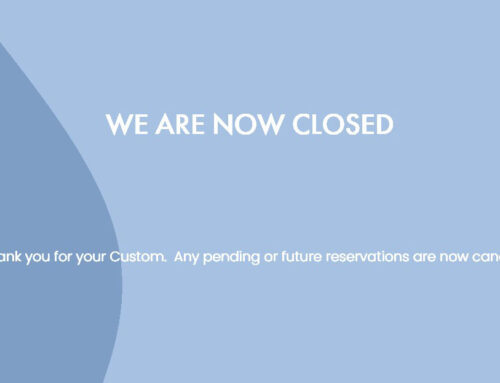Updated 30/05/2020
Chancellor announces changes to the Government Furlough Scheme
Chancellor Rishi Sunak has announced a series of changes to the Government’s furlough scheme, including workers being able to go back part-time from July.
From 1 July 2020, businesses will be given the flexibility to bring furloughed employees back part time. This is a month earlier than previously announced to help support people back to work. Individual firms will decide the hours and shift patterns their employees will work on their return, so that they can decide on the best approach for them – and companies will be responsible for paying their wages while in work.
From August 2020, the level of government grant provided through the job retention scheme will be slowly tapered to reflect that people will be returning to work. That means that for June and July the government will continue to pay 80% of people’s salaries. In the following months, businesses will be asked to contribute a modest share, but crucially individuals will continue to receive that 80% of salary covering the time they are unable to work.
It should be noted that the Furlough Scheme will close to new entrants on 10 June 2020. Employers must have claimed for furlough by then or they will lose the ability to access the scheme.
The scheme updates mean that the following will apply for the period people are furloughed:
June and July: The government will continue to pay 80% of wages up to a cap of £2,500 as well as employer National Insurance and pension contributions. Employers are not required to pay anything.
1 July 2020: Staff are able to go back and work part-time for their employer. (This has been moved forward from the originally-stated date of 1 August 2020).
August: The government will pay 80% of wages up to a cap of £2,500. Employers will pay employer National Insurance and pension contributions – for the average claim, this represents 5% of the gross employment costs the employer would have incurred had the employee not been furloughed.
September: The government will pay 70% of wages up to a cap of £2,187.50. Employers will pay employer National Insurance and pension contributions and 10% of wages to make up 80% total up to a cap of £2,500. For the average claim, this represents 14% of the gross employment costs the employer would have incurred had the employee not been furloughed.
October: The government will pay 60% of wages up to a cap of £1,875. Employers will pay ER NICs and pension contributions and 20% of wages to make up 80% total up to a cap of £2,500. For the average claim, this represents 23% of the gross employment costs the employer would have incurred had the employee not been furloughed.
What is the furlough scheme?
The furlough scheme was set up by the UK Government in response to the Covid-19 pandemic and is officially called the Coronavirus Job Retention Scheme. The purpose of the scheme is to help both employers and employees survive several months without any money coming in. Employers receive help for staff costs whilst the staffs jobs are essentially put on hold. Without this scheme, restating the economy would have been a monumental task as companies would have had to make almost all staff redundant.
The scheme was originally planned to cover wages for March, April and May, but was previously extended to also cover June. It has now been confirmed that it will run until the end of October.
What if my company goes into administration?
Your administrator can access the Furlough Scheme and continue to pay staff however this would only be done if there is the possibility to sell on part of the business as a going concern and thus providing a new employer for the staff.
Coronavirus Job Retention Scheme Factsheet
1. Impact of the scheme so far:
• As of midnight on 24 May 2020, the scheme had been used by 1 million employers, to
protect around 8.4 million jobs and the total value of claims made was £15 billion.
2. Flexible furloughing:
• From 1 July, employers can bring back to work employees that have previously been
furloughed for any amount of time and any shift pattern, while still being able to claim
CJRS grant for their normal hours not worked.
• From 1 July, employers will be able to agree any working arrangements with previously
furloughed employees.
• When claiming the CJRS grant for furloughed hours; employers will need to report and
claim for a minimum period of a week.
• This is a minimum period and those making claims for longer periods such as those on
monthly or two weekly cycles will be able to do so.
• To be eligible for the grant, employers must agree with their employee any new flexible
furloughing arrangement and confirm that agreement in writing.
• Employers can claim the grant for the hours their employees are not working calculated by
reference to their usual hours worked in a claim period. Further details will be included in
future guidance.
• Employers will need to report hours worked and the usual hours an employee would be
expected to work in a claim period.
• For worked hours, employees will be paid by their employer subject to their employment
contract and employers will be responsible for paying the tax and NICs due on those
amounts.
• Further guidance on flexible furloughing and how employers should calculate claims will be
published on 12 June.
3. Closure to new entrants from July:
• The scheme will close to new entrants from 30 June. From this point onwards, employers
will only be able to furlough employees that they have furloughed for a full three-week
period prior to 30 June.
• This means that the final date by which an employer can furlough an employee for the first
time will be the 10 June, in order for the current three-week furlough period to be
completed by 30 June. Employers will have until 31st July to make any claims in respect of
the period to 30 June.
• From 1 July the scheme will only be available to employers that have previously used the
scheme in respect of employees they have previously furloughed.
• From 1 July, claim periods will no longer be able to overlap months, employers who
previously submitted claims with periods that overlapped calendar months will no longer be
able to do this going forward. This is necessary to reflect the forthcoming changes to the
scheme.
• The number of employees an employer can claim for in any claim period cannot exceed the
maximum number they have claimed for under any previous claim under the current CJRS.
• Employers can continue to make claims in anticipation of an imminent payroll run, at the
point payroll is run or after payroll has been run.
• Employers will be able to make their first claim under the new scheme from 1 July.
4. Employer costs:
From August 2020, the level of the grant will be slowly tapered to reflect that people will be
returning to work:
• In June and July, the government will pay 80% of wages up to a cap of £2,500 as well as
employer National Insurance Contributions (ER NICS) and pension contributions for the
hours the employee doesn’t work. Employers will have to pay employees for the hours they
work.
• In August, the government will pay 80% of wages up to a cap of £2,500 and employers
will pay ER NICs and pension contributions for the hours the employee does not work.
• In September, the government will pay 70% of wages up to a cap of £2,187.50 for the
hours the employee does not work. Employers will pay ER NICs and pension contributions
and 10% of wages to make up 80% total up to a cap of £2,500.
• In October, the government will pay 60% of wages up to a cap of £1,875 for the hours the
employee does not work. Employers will pay ER NICs and pension contributions and 20% of
wages to make up 80% total up to a cap of £2,500.
Source: Factsheet for SEISS and CJRS schemes (PDF, 126KB, 5 pages)
Useful Links
Get in touch with LBR
We’re keen to hear from you – get in touch with us on LinkedIn, Facebook or Twitter or chat directly with one of our support agents via WhatsApp.









